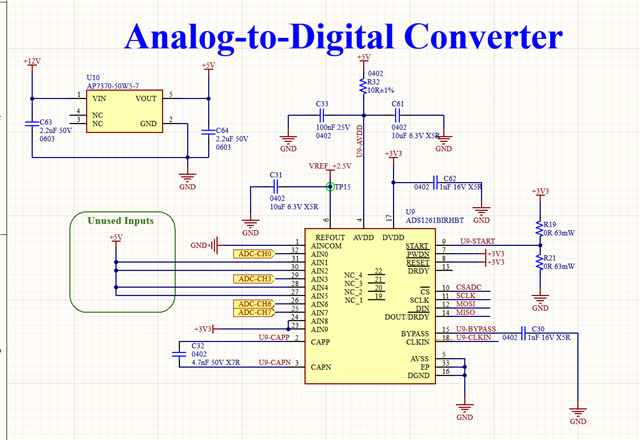Hello,
I want to implement the ADS1261 for our circuit, our purpose is to sense single-ended analog signal.
Can you help me to evaluate the schematic/layout for the IC please.
My plan is to use the AINCOM as GND, then mux the corresponding AIN to compare the AINs with AINCOM.
Before each input, I put a RC filter network with R=470R and C=470pF.
Thank you very much in advance.





